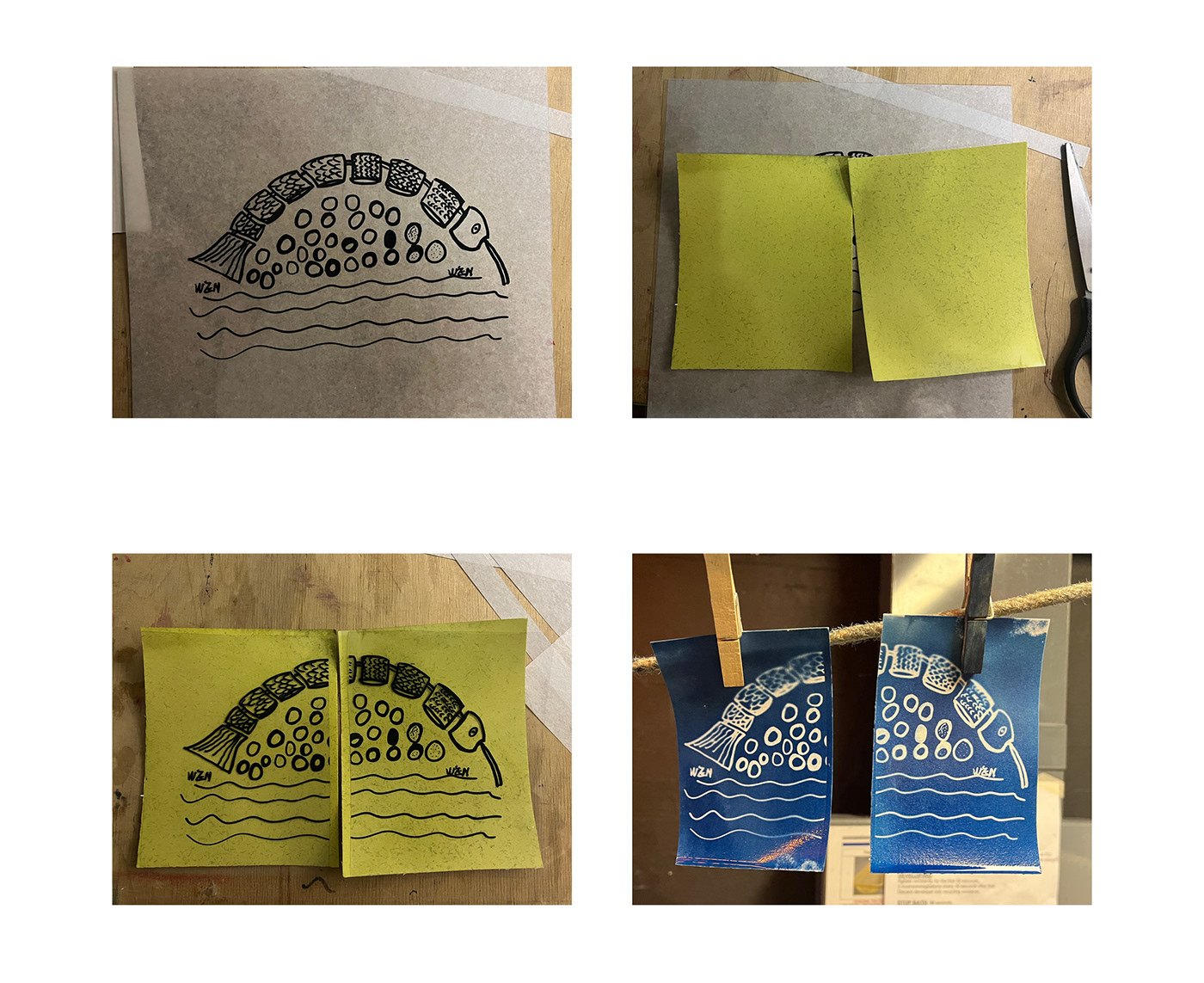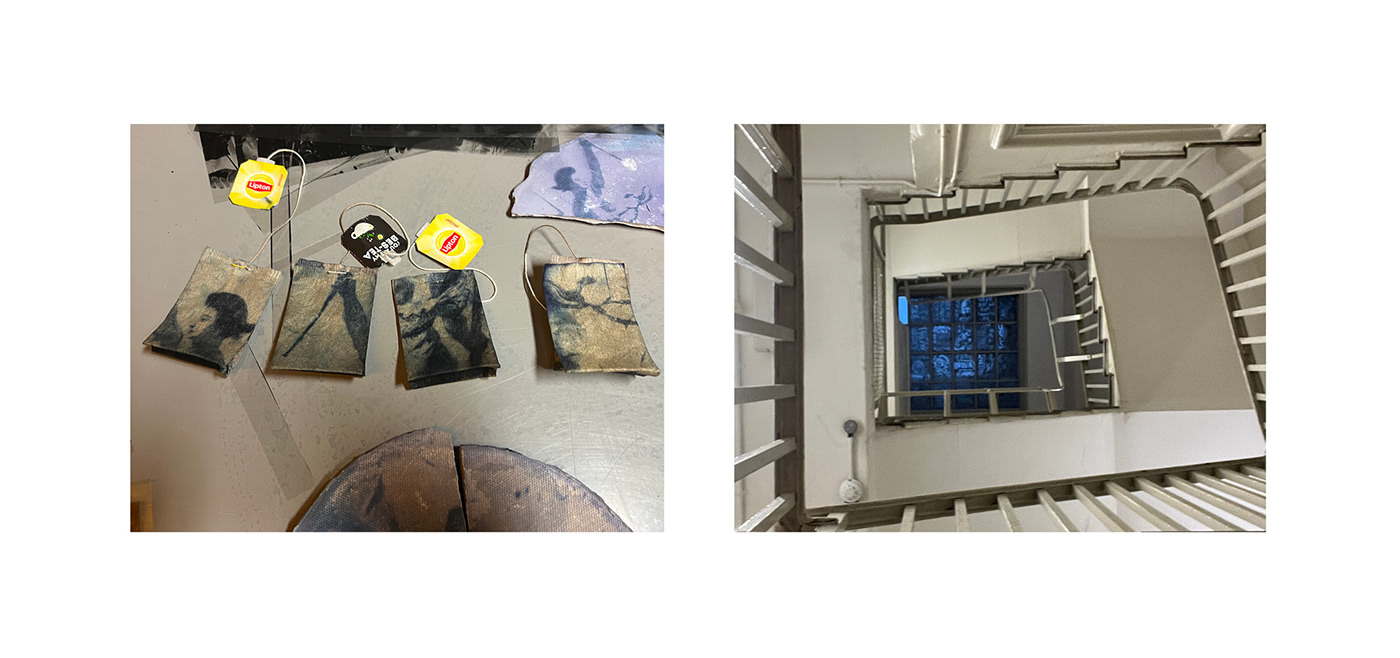Cyanotype is a photographic printing process that produces a cyan-blue print, which it is also called Blueprint. Cyanotypes are often used for creating photograms, where objects are placed directly onto the treated surface to create images, as well as for making prints from negatives.

The process involves treating a surface with a solution containing a mixture of potassium ferricyanide and ferric ammonium citrate.
Mix these two together in a 1:1 ratio, they become sensitive to light, or they become sensitive to ultraviolet light.
But I think they also mix them with different ratios to get different effects. This is the first element could to be explored.


Except for paper, fabric like tea bags and ceramic (left) and glass (right) are also typical materials used as bases. Therefore, the second exploration could involve trying various materials as bases, such as leather or skin.

Cyanotype is easy to get started with but difficult to master. Making consistent quality akin to machine-printed results may require precise operations.

Moreover, the objects placed on the substrate for exploration should be the third element. For instance, nature are a classical theme. It is worth noting that Anna Atkins was thought the first woman photographer (1799-1871), she was a botanist, she applies the process to seaweeds(left). While fibers like cashmere can produce a soft and abstract effect (Ankhmaa, right). Its essence is still the presentation of UV light go through materials.


